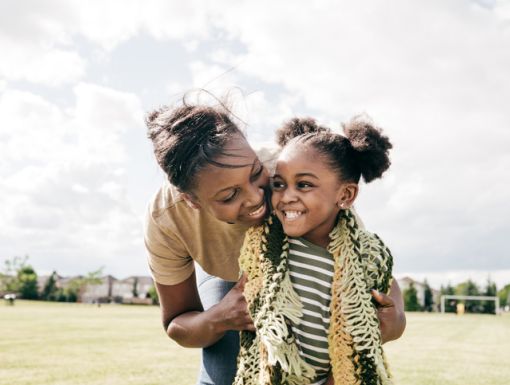
Mindfulness for Parents: How to Practice Gratitude
Why is gratitude helpful?
Did you know that you can change the way you feel by simply changing the way you think? With so much going on in the world today, it’s easy to get caught up in all the bad news that is constantly streaming on television and social media feeds. By always focusing on the negative, we are setting ourselves up to feel emotions such as sadness, frustration, anger and anxiety.
Everyone experiences barriers to expressing gratitude, and even more so during stressful life experiences, where finding things to be grateful for is not always easy. Finding things to be grateful for may also be easier to do for some people more than others. However, research supports the benefits of gratitude — both relationship-related benefits, such as improved connections, and health benefits, such as better sleep, reduced depression and healthy eating.
If you are a “glass-half-empty” kind of person, you can train your brain to practice gratitude more naturally by making a conscious effort to engage in daily activities that focus on gratitude. By training our brains to focus on the positive, we can trigger happy emotions within ourselves. We can experience hope.
What is hope?
Hope has been defined as “a positive feeling and inspired action.” Hope is not a wish. Hope is a proven strategy that impacts all life outcomes. Hope has three key components: Goal, agency and pathway. When we are hopeful, we feel capable and motivated to reach desired goals. Hope is having an expectation that is both desired and possible. Gratitude for the present increases hope for our future, and both are suggested to be helpful to overall wellness as they inspire us to savor the present moment and the meaningfulness of one’s life.
How can I practice gratitude?
- Write it down
If you have a daily planner or desk calendar, try setting aside three minutes during your day to reflect on something you are grateful for and write it down with the date. This can be first thing in the morning before your day starts, during the lunch hour or before bed at night. Daily practice will help make journaling what you’re grateful for a habit. Try keeping an annual calendar or journal that you can use each year to reflect on all the small things that made you smile over the year. Have family members write down their thoughts and post them on a display board or the fridge. Try a visual display such as leaves on a tree for a constant reminder for everyone to see.
- Say it Out Loud
Set a goal to tell one person why you are grateful for them or what they do each week. Praising others is a way to spread joy and can be just as rewarding to the person giving the affirmation as it is to the person receiving it. Make it a routine to have your family voluntarily tell each other what they are grateful for out loud. Try having everyone in your family go around the table during dinner to tell each other one good thing about their day. If children know this activity will be happening, they will be more likely to focus on the positive so that they have something to report to others. When your children share their feelings, express gratitude about your children choosing to share with the family. Not only will it help boost your mood, but it will help boost your child’s mood too.
Begin your gratitude practice and access your inner wisdom with the help from our guided meditation below.



